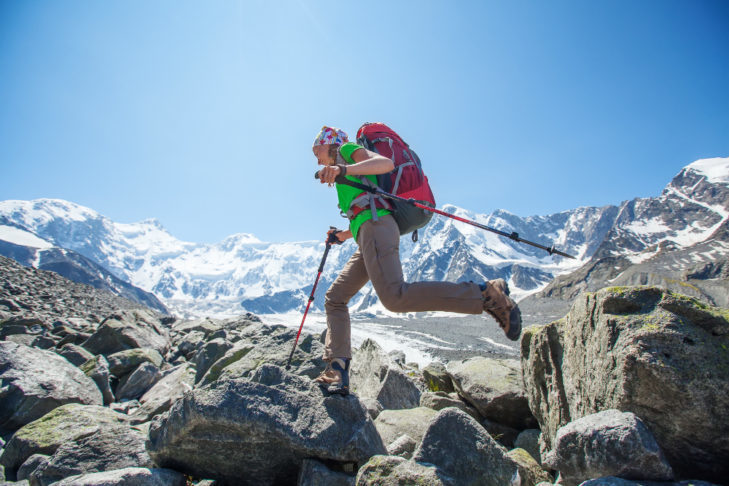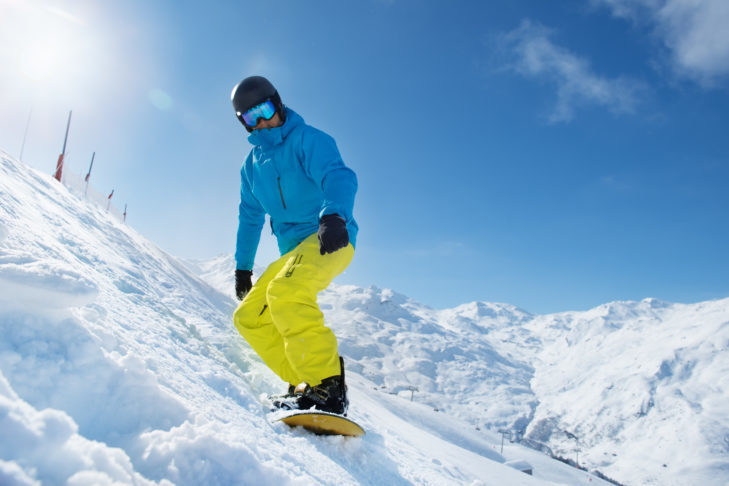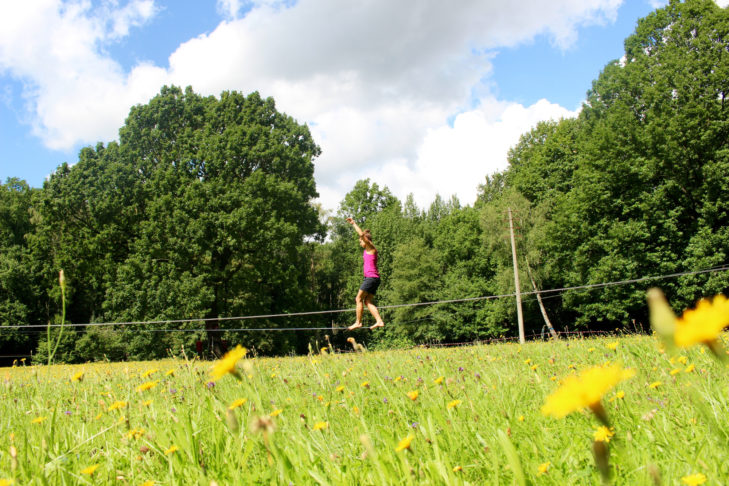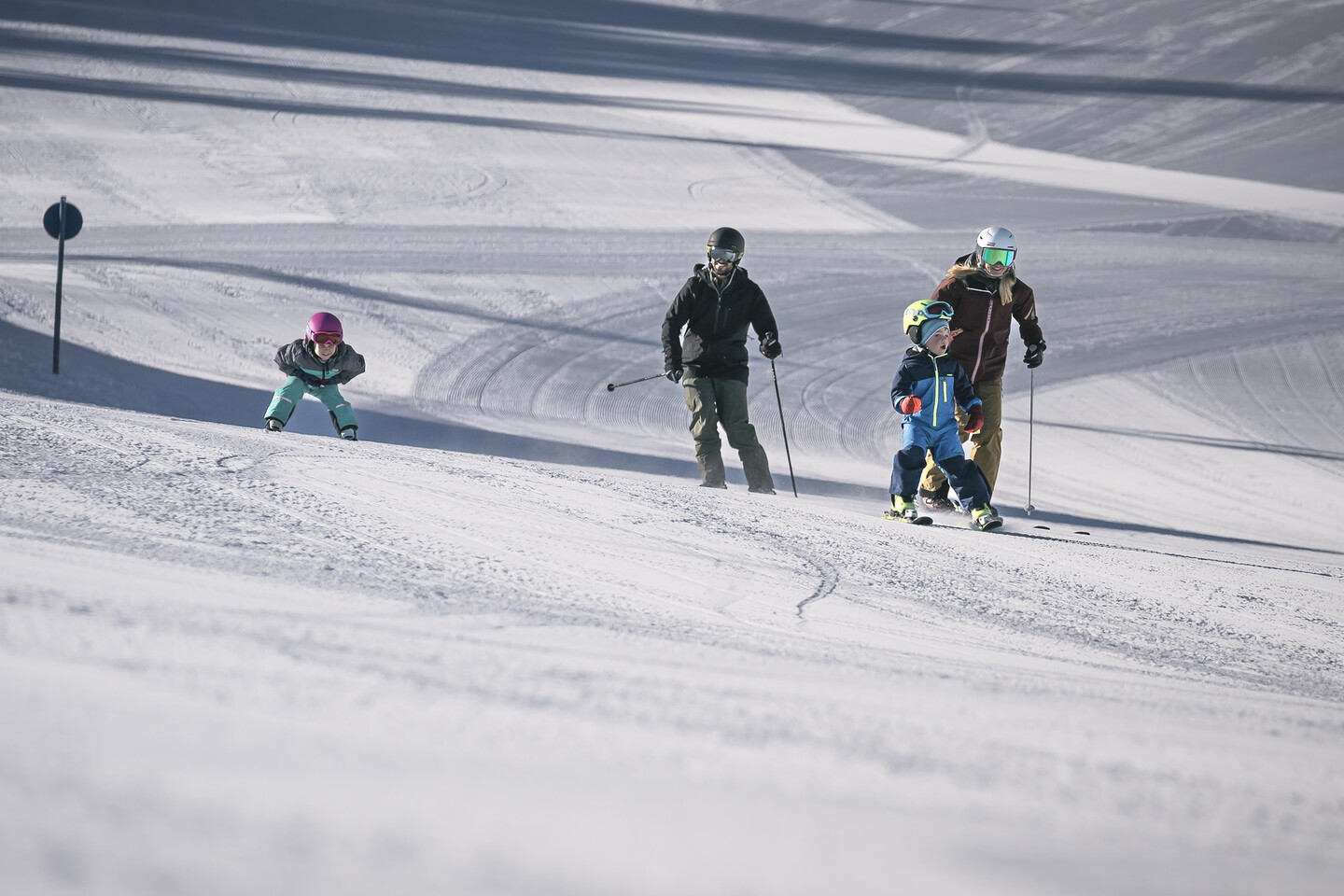If you keep your body fit, even in summer, you will not only feel better when skiing or snowboarding, you will also minimize the risk of injury. The experts of the German Ski Instructors Association (DSLV) give fitness tips on how to keep your muscles in shape for winter sports. Then, with a clear conscience, you can start planning your ski holiday for the new winter season!
Strength and Coordination Training
Skiing is a feat of strength. It is therefore important to build muscles and train physical agility. Alois Grabmair is a member of the DSLV instructor team Ski Alpin, DOSB sports physiotherapist and head of a physiotherapy practice. His advice concerns basic fitness and muscle agility: “Winter sportsmen and women should be careful to prepare for the season. In this way, injuries can be prevented while at the same time improving their general condition. Ideally, the preparation already starts in summer […]. This is easy, by the way, and it doesn’t matter whether young or old, beginner or old hand – everyone should prepare for their sport before the start of winter”.
The simplest exercises include repeated knee bends, downhill squats, the one-leg stand or the “bridge”, where you balance backwards on your hands and feet. The general rule is: first train endurance, then strength. It is advisable to go jogging regularly. After just a few runs, you can feel the progress.
Hiking is One of the Best Forms of Preparation
Any movement helps the body to get into shape and stay in shape. Running or cycling longer distances is one of the simplest everyday challenges. To tackle it even more conscientiously, we recommend, for example, small hikes with gradients. Hiking trains not only the leg muscles, but also the cardiovascular system. Therefore, altitude training in the mountains is particularly effective. “From a height of about 1,200 m, the body has to absorb more oxygen,” explains Grabmair. “The cardiovascular system is gently stimulated in this way. During a leisurely hike, you also train your stamina – an important basis not only for winter sports. One can already speak of altitude training during excursions in the Bavarian foothills of the Alps”.
Intergrate Exercises into Your Daily Life
Not everyone finds time for extensive preparatory training for the winter. This makes it all the more important to create rituals for small exercises. Grabmair recommends to do small stretching and mobilization exercises daily before going to bed. Balancing on one leg, leading the heel of the second leg towards the buttocks, the thigh muscles are stretched with minimal effort. The sole of the foot can also be easily mobilized: To do this, the foot is placed on a golf or tennis ball and rolled back and forth. The sole of the foot is connected to the lumbar spine – when it is relaxed, the back also becomes more mobile. “It’s an easy exercise that can also be done while making coffee,” summarizes Grabmair.
Coordination can be particularly well trained when movements are carried out in an unusual way. It is also advisable to perform movements regularly “the wrong way round”. “When playing football, shoot with the ‘wrong’ foot again and again, walk backwards through the apartment for a few minutes every now and then. This can be done easily, costs nothing and trains the coordination skills enormously,” says Baier.
Tips for Snowboarders
Matthias Baier has very simple tips at the ready. He is a state-certified snowboard instructor, member of the DSLV instructor team, snowboard coordinator and head of the DSLV professional snowboard school “Schneesturm” in Lenggries. He explains what is important when snowboarding: “Snowboarding consists of very versatile, demanding movement sequences in terms of coordination. Many movements are carried out crosswise, and due to the changing direction of travel, also on both sides. For season preparation, coordination exercises are therefore particularly important, in addition to general endurance and strengthening exercises”. Baier recommends very simple exercises: “It’s enough to occasionally make a sandwich with the ‘wrong’ hand or to pick up the coffee cup crosswise from time to time”.
Year-Round Activities for an Easy Start in Winter
For an optimal start into the winter season, Grabmair recommends regular sports throughout the year. “Cycling, Nordic walking or jogging are good tips for anyone who wants to maintain their performance”. It doesn’t depend on top sporting performance, even those who enjoy their favourite sport do something for their health, says Grabmair.
Trending Sports: Slackline
Preparing for the winter season is also possible in other ways: Slacklining has been a trend for several years now – and not just among climbers. Exercises for one-sided training in particular, such as knee bends, can easily be performed on the elastic rope. Individual weaknesses can be specifically balanced and the sense of balance is optimally challenged. It’s also a lot of fun!
Tips for Fitness Beginners
Even those who have not yet been involved with fitness, muscle building or other endurance sports in everyday life can still get fit. You just have to start – and small. It’s important that you do not demand too much from your body at the beginning and that you slowly improve. A training partner can help motivate you.
Conclusion
In conclusion, the following can be said: Those who exercise regularly and heed one or two expert tips will be strengthened and fit to start their skiing holiday. This not only feels good, but also guarantees safe winter sports fun.







